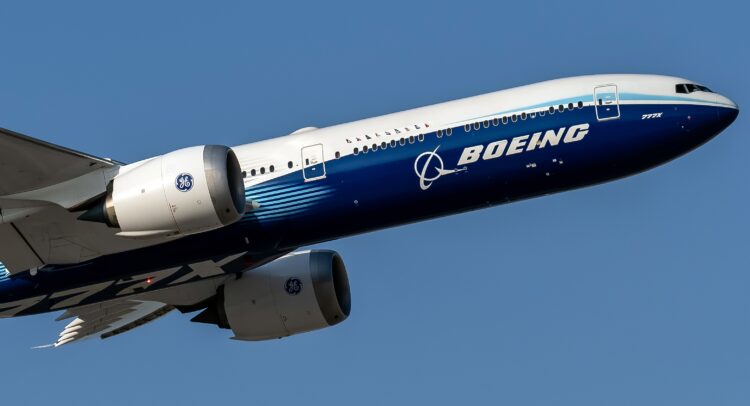Boeing (NYSE:BA) has seen its shares drop about 13% since reporting Q3 earnings in late October, and according to Seaport analyst Richard Safran, sentiment isn’t likely to improve until early 2026, as the stock continues to be penalized for recent developments.
Meet Your ETF AI Analyst
- Discover how TipRanks' ETF AI Analyst can help you make smarter investment decisions
- Explore ETFs TipRanks' users love and see what insights the ETF AI Analyst reveals about the ones you follow.
“After the 3Q25 charge and the recovery story moving to the right, we think investors put BA in the penalty box and the stock trades in a narrow range until January,” Safran noted.
Heading into the Q3 readout, it was evident there would be a charge tied to another B777-X delay. Still, the $5 billion charge linked to a one-year delay in entry into service came in higher than most expected. While Safran had anticipated $4 billion and noted that $5 billion wouldn’t be surprising, he thinks investors were generally expecting between $2 billion and $4 billion, likely influenced by the $3.5 billion in B777-X charges recorded in 3Q/4Q24.
Safran also thinks there was little chance Boeing would offer 2026 guidance. Some had anticipated the company would share early trends for the year, particularly around FCF (free cash flow). At a minimum, many expected CFO Jay Malave to reaffirm prior targets, including the $10 billion FCF goal. However, given that Malave has been in the role for only about two months and is known for his cautious stance on guidance, the analyst believes it was highly unlikely Boeing would provide any 2026 outlook before January. “In our view,” Safran added, “BA will likely endorse the $10B FCF target, perhaps higher, but will not commit to a year.”
So, what impact will the $5 billion charge have? Before Q3, the B777-X forward loss was allocated across a 500-aircraft block, which, at a production rate of four per month, would have extended the effect through 2036, assuming entry into service in 2027. In Q3, Boeing expanded the block to 600 aircraft, extending the free cash flow impact out to 2038. The additional 100 aircraft are expected to carry significantly higher margins, benefiting from improved pricing and production efficiencies. While the 3Q25 charge creates an adverse $2 billion effect on estimated 2026 free cash flow – mainly due to timing of receipts and higher inventory costs – the drag on 2028 and 2029 estimates is modest, at roughly $385 million per year as the charge is amortized over twelve years. “Consequently,” Safran said, “we don’t think the charge actually impacts the overall attractiveness of the BA story.”
In fact, looking at the stock, the analyst says investors with patience should view the current weakness as a “buying opportunity ahead of potential positive 2026 catalysts: 1) more important for valuation are 2028E, or more likely 2029E; 2) with continued book to bill >1x likely going forward, we think we are in an extended order cycle and continue to see upside to expectations after 2027, and; 3) the 3Q25 charge isn’t likely to have a meaningful impact on FCF estimates after 2026.”
Bottom line, Safran assigns Boeing shares a Buy rating, along with a $285 price target, implying the stock will gain 46% in the next 12 months. (To watch Safran’s track record, click here)
Most analysts are thinking along similar lines. Based on a mix of 13 Buys vs. 2 Holds, Boeing stock claims a Strong Buy consensus rating. The forecast calls for one-year gains of 33%, considering the average price target stands at $259.38. (See Boeing stock forecast)

To find good ideas for stocks trading at attractive valuations, visit TipRanks’ Best Stocks to Buy, a tool that unites all of TipRanks’ equity insights.
Disclaimer: The opinions expressed in this article are solely those of the featured analyst. The content is intended to be used for informational purposes only. It is very important to do your own analysis before making any investment.
















